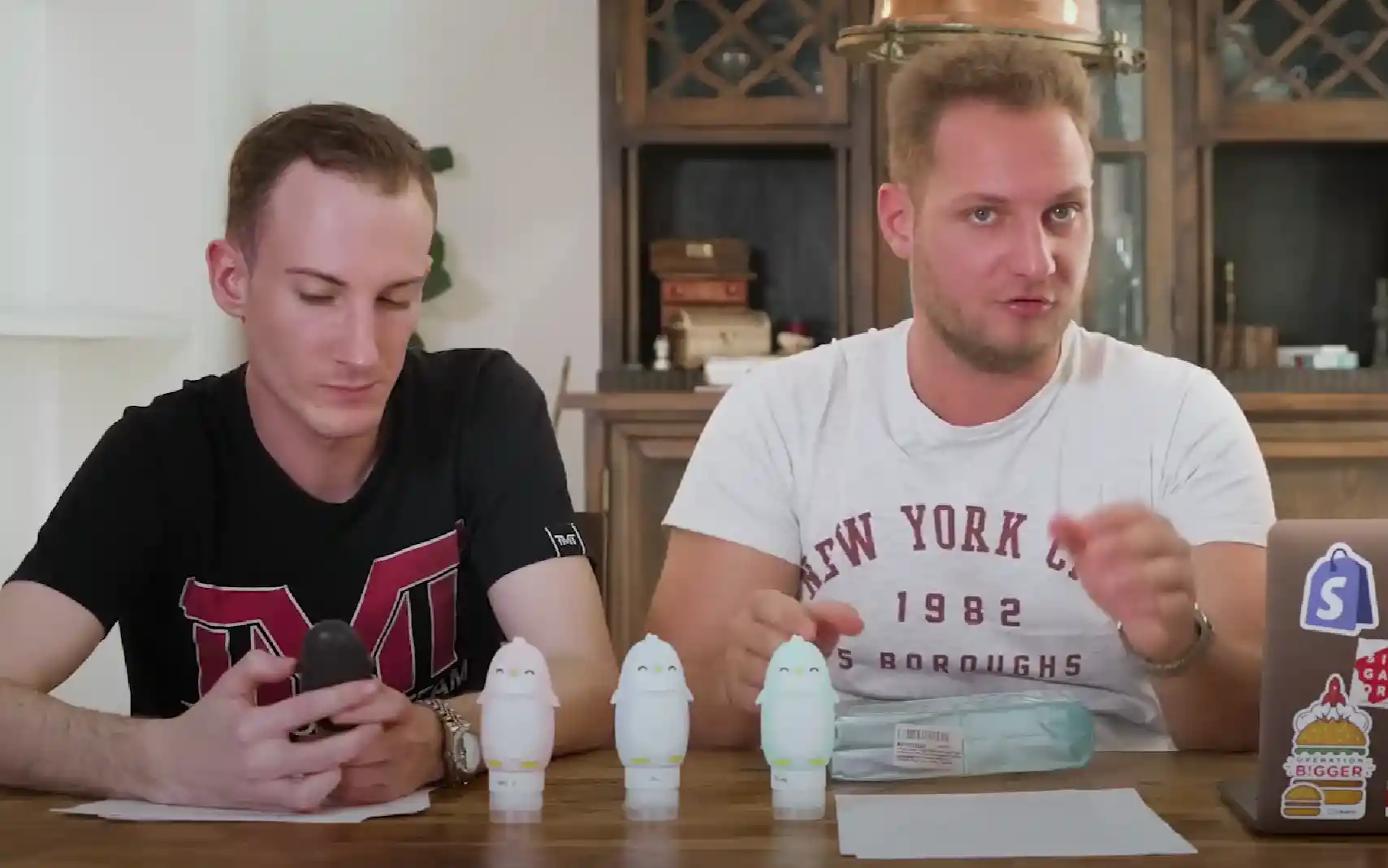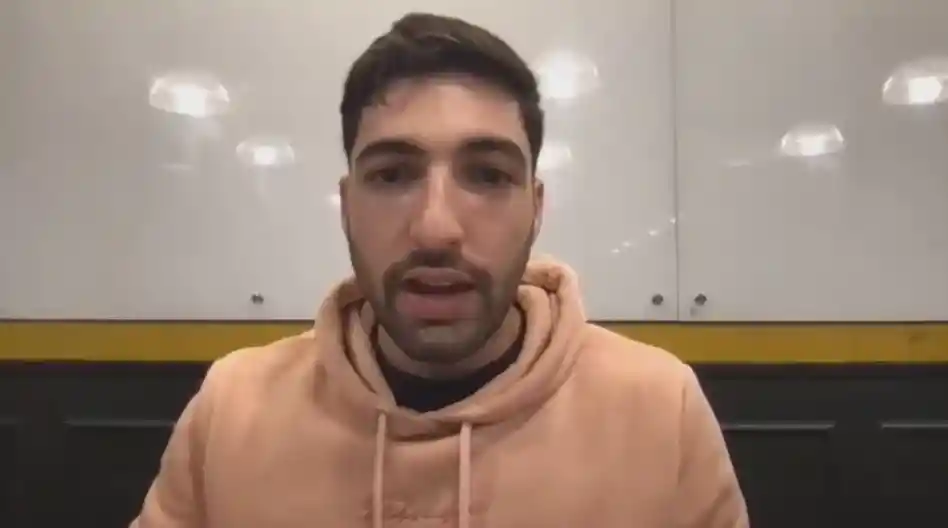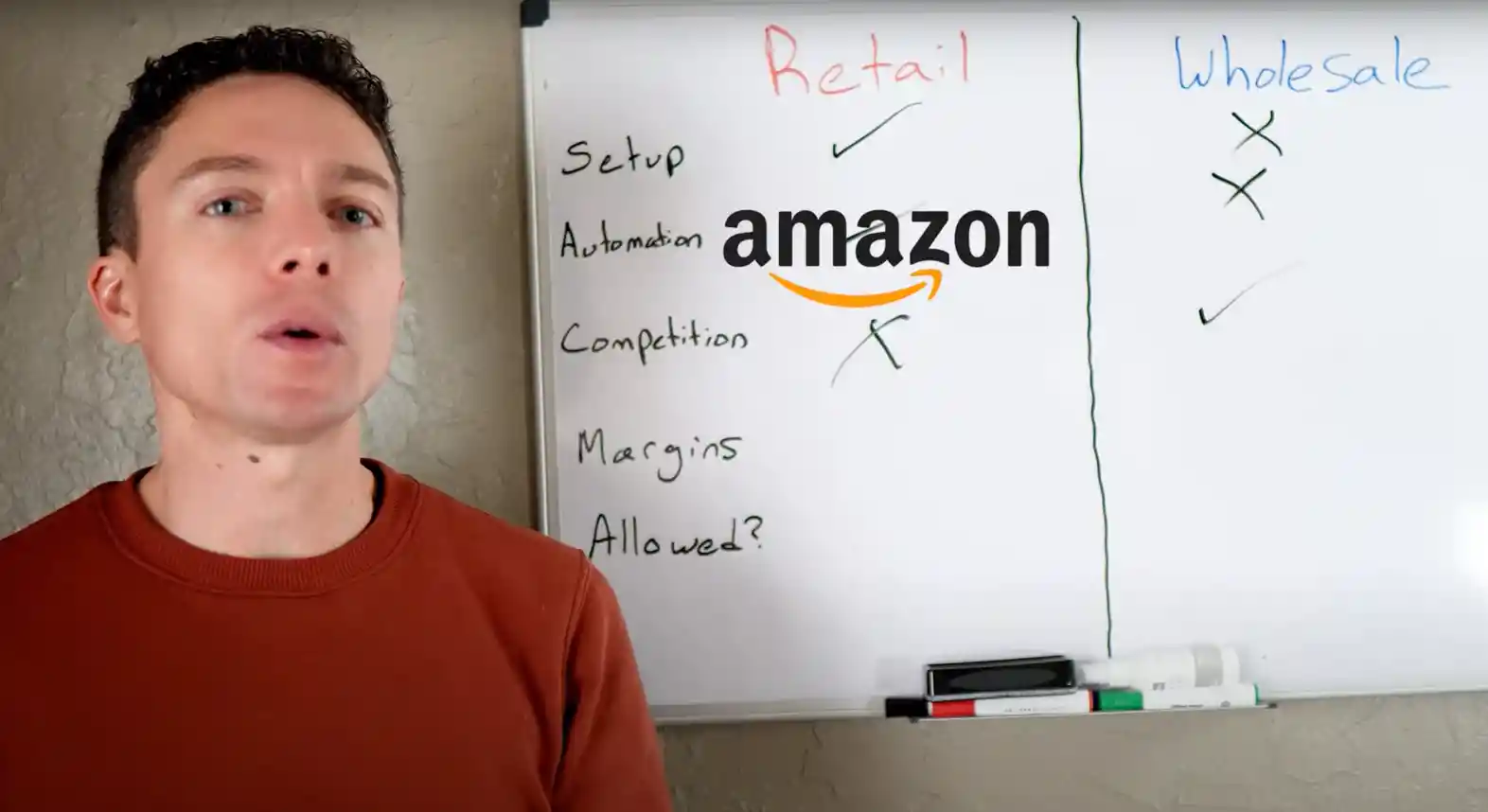
The global dropshipping market is set to hit $476.1 billion by 2026, making it a huge opportunity for entrepreneurs. But new dropshippers often feel lost. How do you avoid mistakes and find success?
In this article, we share 10 real dropshipping success stories. These entrepreneurs reveal strategies like picking the right products, boosting perceived value, and optimizing ads. Learn from their challenges and victories to dodge pitfalls and build a profitable dropshipping business.
10 Real Dropshipping Success Stories with Best Tips
Kamil Sattar
Kamil Sattar, known as "The Ecom King," kicked off his dropshipping journey in 2017 after dropping out of college in Birmingham, England. Unhappy with traditional paths, he worked retail jobs, saving up to start his venture.
Despite early losses, Kamil's persistence led to a breakthrough. By 2020, he generated $1.7 million in sales on Shopify, selling clothing through his brands Sole et Al and Fadcloset.
Today, his companies earn over $5 million annually, and he mentors aspiring entrepreneurs.
What Made Him Successful?
- Pick a Passion-Driven Niche: Choose products you love, like Kamil did with fashion. It helps you understand your customers better.
- Master Organic Marketing: Use platforms like TikTok for free exposure. Kamil's viral videos boosted his brand without heavy ad costs.
- Learn from Mistakes: Don't quit after setbacks. Kamil lost money early but tweaked his strategy to focus on fewer, high-quality products.
- Diversify Suppliers: Move beyond AliExpress to reliable suppliers. This cuts shipping times and improves customer trust.
- Mentor Others: Share your knowledge. Teaching, like Kamil does, sharpens your skills and builds your network.
Andreas Koenig and Alexander Pecka
Andreas Koenig and Alexander Pecka, a pair of Austrians, launched their dropshipping effort in 2018 with grand aspirations. Their goal was $1,000 in daily sales, but they hit some hiccups. They lost $2,000 on early ads that didn't work.
They did not give up, but they also learned from their mistakes. They created a pet dropshipping store in a niche market. Today, their shop is pulling in $10 million a year, proof positive that perseverance pays off.

What Made Him Successful?
- Specialize in a Niche: No general stores. Choose a niche, perhaps pets, to attract a steady clientele.
- Learn From Losses: Test out ads and products. Leverage failures, such as their $2,000 advertising flop, to clarify your game plan.
- Assemble a Team: Bring on some help for customer service and ads. A store that's growing can't be managed by one person alone.
- Make an Emotional Connection: Craft product stories that connect with your audience. Pet owners purchase when an emotional connection is made.
- Hire Dependable Vendors: Avoid laggard vendors. Cheap and fast shipping creates trust and happy customers.
Tom Sagi
Tom Sagi, a young Israeli entrepreneur, started dropshipping while serving in the army. With limited time, he joined an Amazon FBA course but soon switched to Shopify.
He tested products from AliExpress and CJDropshipping, focusing on baby products. His niche store, selling plush toys like the "Peek A Boo Bear," took off.
At its peak, Tom's store earned $7,000 daily. His persistence and smart marketing turned his side hustle into a thriving business.

What Made Him Successful?
- Test Many Products: Upload 5-6 products daily to find winners. Keep testing until you spot what sells.
- Use Multiple Suppliers: Work with at least three suppliers, for faster shipping and safety.
- Pick a Broad Niche: Choose a niche like baby products. It lets you test various items, like Tom's plush toys.
- Hire a Virtual Assistant: Get help with tasks. A VA saves time as your store grows.
- Follow Up with Buyers: Use emails or calls to recover abandoned carts. It boosts sales.
AC Hampton
AC Hampton, a 28-year-old entrepreneur, left his 9-5 marketing job to chase dropshipping dreams. Early on, he faced tough times. His first ventures flopped, and PayPal froze his account for 90 days.
But AC didn't quit. In just nine months, he built a Shopify store selling trendy products, hitting $1.7 million in sales.
Now, he runs multiple 6- and 7-figure stores and mentors others through his Supreme Ecom Blueprint course, inspiring thousands on YouTube.
What Made Him Successful?
- Start Small: Turn $350 into big wins. Test products with low budgets to find what sells.
- Use Facebook Ads: Promote your store on Facebook. It's a great place to reach customers.
- Learn from Setbacks: Don't let failures like frozen accounts stop you. Adjust and keep going.
- Share Knowledge: Teach others, like AC does on YouTube. It builds trust and grows your brand.
- Pick Reliable Suppliers: Avoid flaky suppliers. Choose ones who deliver fast to keep customers happy.
Rafael Cintron
Rafael Cintron, a Puerto Rican entrepreneur, began dropshipping in 2017. He started by working for a Shopify store, learning the ropes of product sourcing and Facebook ads.
By 22, he built a 7-figure e-commerce business selling practical items like children's toys during holidays. Now, he runs Automated Ecommerce, mentoring others with his 15-person team.
His Shopify stores thrive, and he helps thousands worldwide build profitable dropshipping businesses through daily tips and strategies.
What Made Him Successful?
- Choose Proven Products: Pick items with high sales, like toys during Christmas. Check supplier data for demand.
- Start with AliExpress: Use it for variety and easy orders. Switch to private suppliers for bigger sales.
- Solve Problems: Sell useful products that fix buyers' issues. Demand drives sales.
- Avoid Legal Risks: Steer clear of copyrighted or risky items to protect your business.
- Learn by Doing: Work with a store, like Rafael did, to master ads and sourcing hands-on.
Paul J Lipsky
Paul J Lipsky, a former lawyer in New York City, started dropshipping for more freedom. From 2017, he grappled with complex eBay stores. Paul succeeded by learning from others and employing AutoDS to automate tasks.
He now devotes only an hour a day to his business, which sells a variety of products, including electronics and home goods.
He has made millions in sales on eBay, and as a YouTuber with over 125,000 subscribers, offers tips and advice to inspire others to streamline their own online ventures.

What Made Him Successful?
- Streamline the Process with Automation: Use like AutoDS to process orders. It is faster and less stressful.
- Learn from Others: Learn from successful dropshippers. Their tactics shape your early moves.
- Sell What's Hot: Pick the popular products, like electronics, to increase your sales.
- Safer Time Spend: More time for everything else; simply streamline your work. One hour daily can be enough.
- Share Your Journey: Teach on YouTube. It builds your brand and helps you learn.
Tze Hing Chan
Tze Hing Chan, a driven student from Malaysia, started dropshipping during the 2020 pandemic. After failed attempts with phone cases and kitchen tools, he found success with bubble tea plush toys.
His store, Subtle Asian Treats, targeted Asian-American buyers. In just two months, Tze earned $19,000 in profit, selling 2,579 toys.
He built a professional store and used Facebook ads to drive sales. Now, he's launching a sportswear brand with his earnings.

What Made Him Successful?
- Tap Into Trends: Choose trending niches, like bubble tea, to attract eager buyers.
- Build a Pro Store: Edit photos and write unique descriptions. Make your store look trustworthy.
- Bundle Products: Offer deals, like Tze's three-toy bundle, to boost order value.
- Target Specific Audiences: Focus on groups, like Asian-Americans, who love your niche.
- Learn from Failures: Use lessons from failed stores to improve your next venture.
Nathan Nazareth
Nathan Nazareth, a 23-year-old from Vancouver, Canada, began dropshipping at 18 with no experience. His first store, selling resistance bands, flopped, losing $400.
Undeterred, he tested more products, learning from each failure. A breakthrough came with a winning product, earning $5,000 in a single day. Despite setbacks like long shipping times and a disabled Facebook account, Nathan rebuilt.
Now, he runs three e-commerce brands, generating over $100,000 monthly in profit, with one brand hitting $400,000 in sales yearly.
What Made Him Successful?
- Keep Testing Products: Try new items, like Nathan did after his resistance bands failed. Persistence finds winners.
- Learn from Mistakes: Use failures, like chargebacks, to improve your store's operations.
- Focus on Fast Shipping: Choose suppliers with quick delivery to avoid customer complaints.
- Stay Positive: Believe success is coming. A "not if, but when" mindset keeps you going.
- Use Social Media Smartly: Create original ads on TikTok and Facebook. Avoid copied content to protect your account.
RJ Martinez
RJ Martinez left his 9-to-5 job to dive into dropshipping and e-commerce. Over 10 years, he mastered online selling, earning over $300,000 in profit from print-on-demand products like custom apparel and accessories in the past five years.
He built multiple profitable stores by picking high-quality items and using smart ads.
Now, RJ mentors others through YouTube and Instagram, sharing tips to help new dropshippers succeed. His journey shows how persistence and strategy can lead to freedom.

What Made Him Successful?
- Choose Quality Products: Pick in-demand, unique items like custom shirts. Avoid low-quality goods to keep customers happy.
- Automate Tasks: Use tools to handle orders and support. It saves time for big-picture plans.
- Run Smart Ads: Test Facebook and Instagram ads to drive traffic. Focus on ads that convert.
- Build a Brand: Create a trustworthy store with a strong identity. Trust turns visitors into buyers.
- Stay Persistent: Learn from failures. Keep trying, like RJ did, to find what works.
Read More:
Why Do Some Dropshippers Succeed While Others Fail?
Dropshipping can be a goldmine, but why do some hit it big while others crash? It's not luck—it's strategy. Successful dropshippers move fast, learn from flops, and adapt. They don't stick to one failing product. You need to think differently to stand out.
Ever wonder what sets winners apart? They test products quickly. Pick an item, brand it, and run ads on TikTok or Facebook.
If it doesn't sell in a week, drop it. Move on. Successful dropshippers build single-product stores or branded general stores to test ideas.
Failing fast is your secret weapon. Don't waste months on a product you think should sell. Analyze data, tweak ads, and try again. Long shipping times kill sales, so use suppliers with fast delivery to compete with Amazon.
Why do some fail? They copy "gurus" without changing plans. Markets get crowded, so you must innovate.
Here's how you can succeed:
- Test one product at a time with a simple store or funnel.
- Use TikTok for viral ads or micro-influencers to spread the word.
- Retarget with Facebook ads to catch interested buyers.
- Explain how your product solves a problem in ads.
How do you market on TikTok? Post videos repeatedly until one goes viral, or pay for ads. Success comes from trying new ideas, like gamifying ads to engage customers. Keep testing, stay flexible, and don't fear failure—it's your best teacher.
Why Perceived Value Matters More Than Product Cost in Dropshipping
When you're dropshipping, the price you pay for a product isn't the big deal. It's what your customers think the product is worth that matters.
This is called perceived value. If they feel it's special or useful, they'll happily pay more. That's how you make money.
Imagine a handmade wooden coffee table. One store sells it for £120, another for £260, and a fancy one might charge £400.
Why the difference? Customers can't easily guess what it really costs to make.
If your store looks legit and trustworthy, they'll believe it's worth the higher price. That's your edge in dropshipping.
So, how do you make your products seem valuable? Here are some easy tips:
- Use a sharp, professional store design with great photos.
- Write descriptions that show why your item rocks.
- Price it right—not too cheap, or it'll feel low-quality.
Picking the right products is key too. Go for stuff people can't price easily, like unique gadgets or branded items. Say you sell a cool gadget for £50 that costs you £10—customers won't know the real cost, and if it looks good, they'll buy it.
But avoid obvious cheap stuff. If they can tell it's worth little, they won't pay much. Ever wonder why some stores thrive while others flop? It's all about trust and value.
Perceived value beats product cost every time.
You're not just selling items—you're selling a story. Make your customers feel they're getting something awesome at a fair price.

How to Get Sales with $0 Advertising?
Achieving sales without spending a single dollar on advertising is absolutely possible. Many successful sellers have built profitable businesses with zero ad spend by employing smart, strategic approaches. Here's how you can replicate their success:
Focus on a Niche
The key is to narrow your focus. Instead of chasing the latest trends, find a niche you understand well. Look for gaps in the market that larger platforms like Amazon or Etsy aren't addressing effectively. Tools like Ahrefs can help you identify low-competition keywords.
Master SEO for Organic Traffic
Organic traffic is the unsung hero when it comes to driving sales without ads. Here's how to leverage SEO:
- Use long-tail keywords: Create product descriptions that target specific, niche phrases (e.g., "durable cat trees for large cats" rather than just "pet supplies").
- Fix technical issues: Use free tools like Google Search Console to ensure your site's SEO is on point.
- Publish helpful content: Blog posts answering common customer questions (e.g., "How to style XYZ product") can draw organic traffic.
- Speed up content creation: Tools like GPT can help you generate content faster, but remember to edit it to ensure it sounds natural and human.
Leverage Free Platforms
You don't need to spend on ads to drive traffic. Here are two powerful yet often overlooked tools:
- Google "Shop" tab: Optimize your product titles and images to appear in the shopping section of Google, which can drive significant traffic to your site.
- Social media communities: Engage in niche Facebook groups or TikTok by sharing helpful videos or insights. One seller found success simply by consistently offering value in conversations, not relying on viral content.
Optimize What's Already Working
Look at your competitors' weaknesses and use them to your advantage. For example, many stores have slow load times or confusing site structures. Here's how you can optimize your store:
- Clear categories: Use straightforward category names like "Gifts Under $25."
- Mobile-friendly design: Ensure your site is easy to navigate on mobile devices.
- Fast hosting: A quick website (under 2-second load times) keeps customers around longer and boosts conversion rates.
Read More:
Expert Tips
The dropshipping world is full of opportunity, and the 10 entrepreneurs we've shared show how to seize it.
You don't need to be an expert—just stay persistent and learn from mistakes. Use their tips: test quickly, build customer trust, and adapt to challenges. With these lessons, you're ready to dodge common traps and build a winning dropshipping business.










 Global Shipping
Global Shipping




























